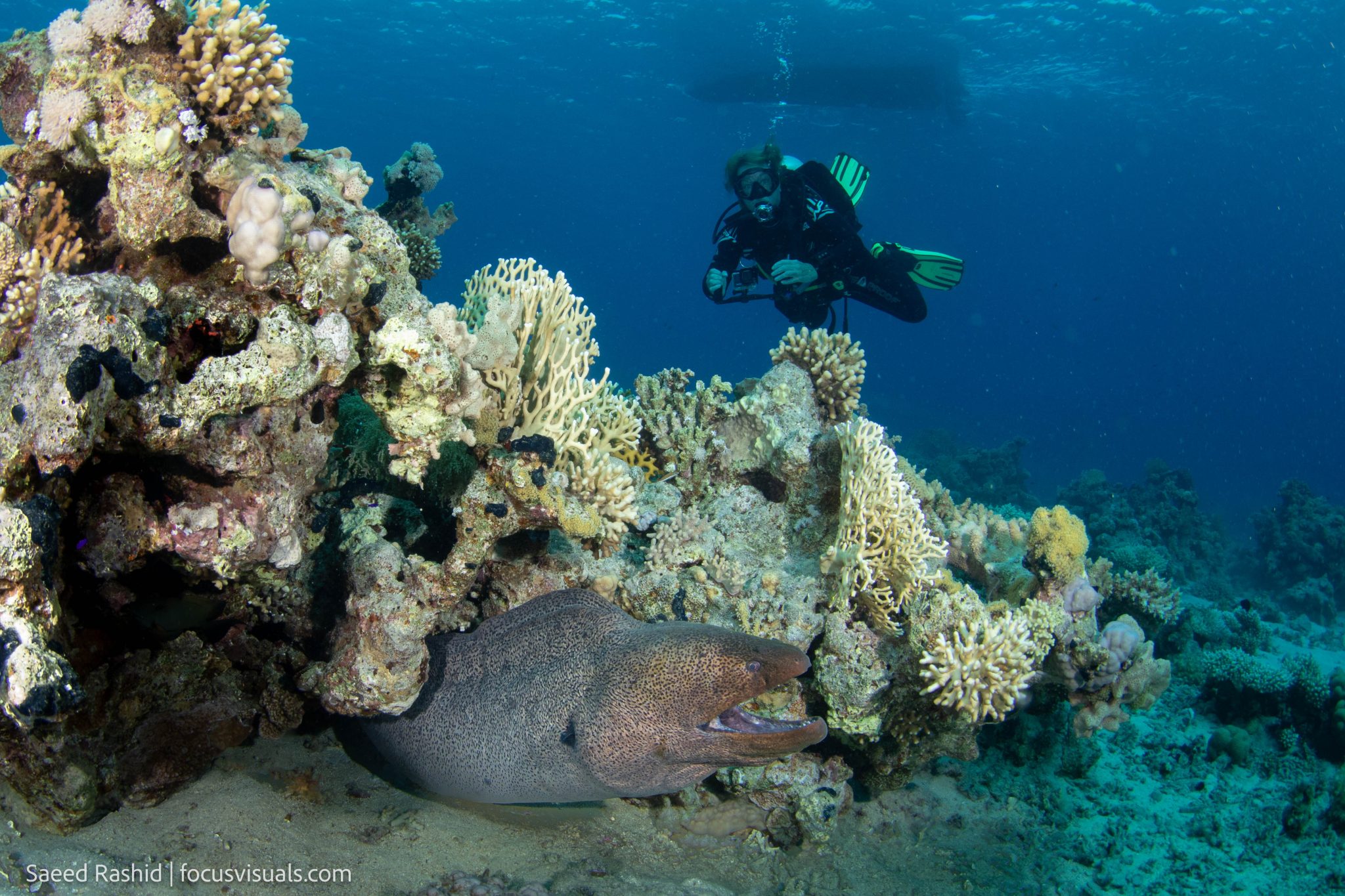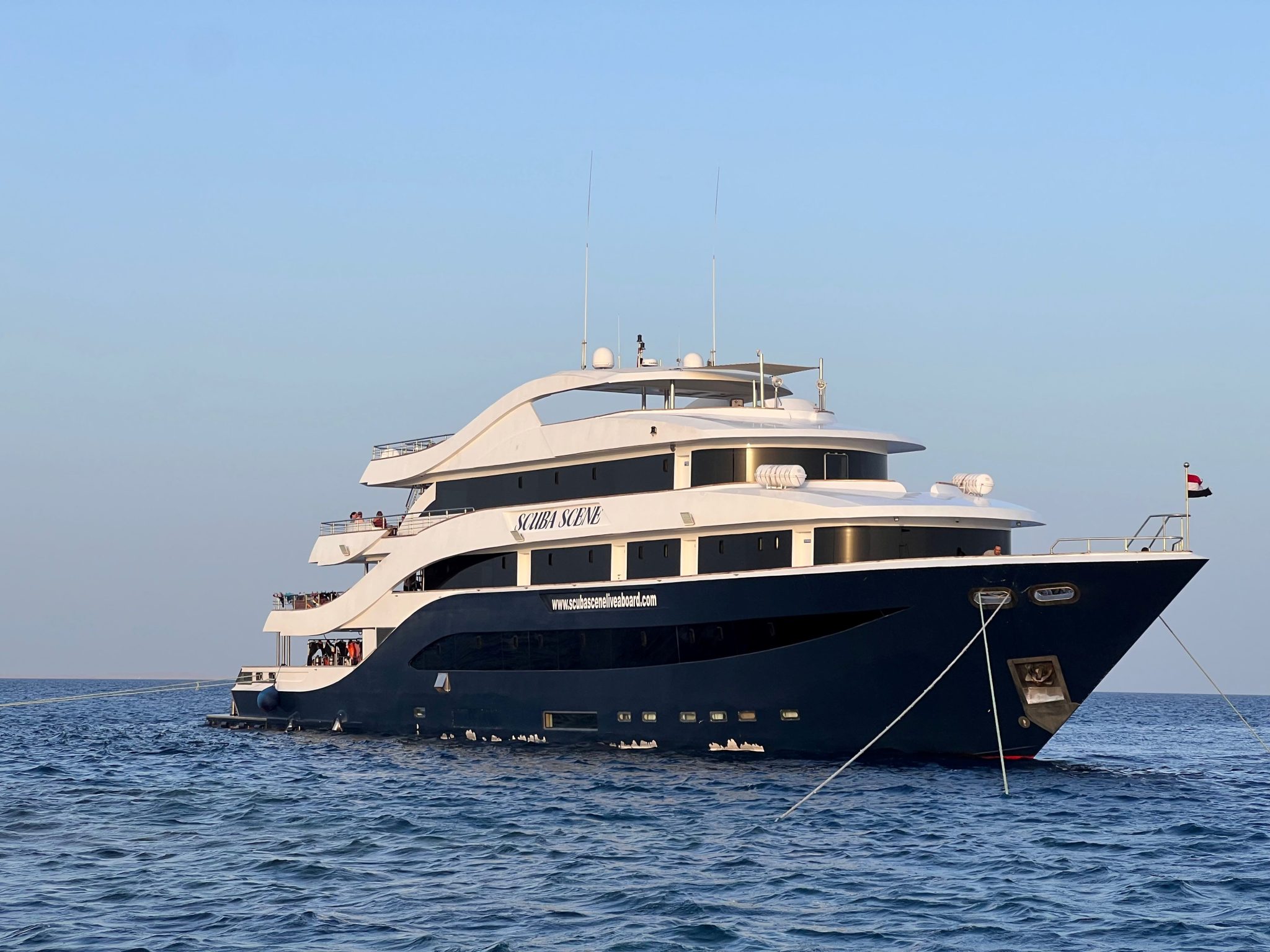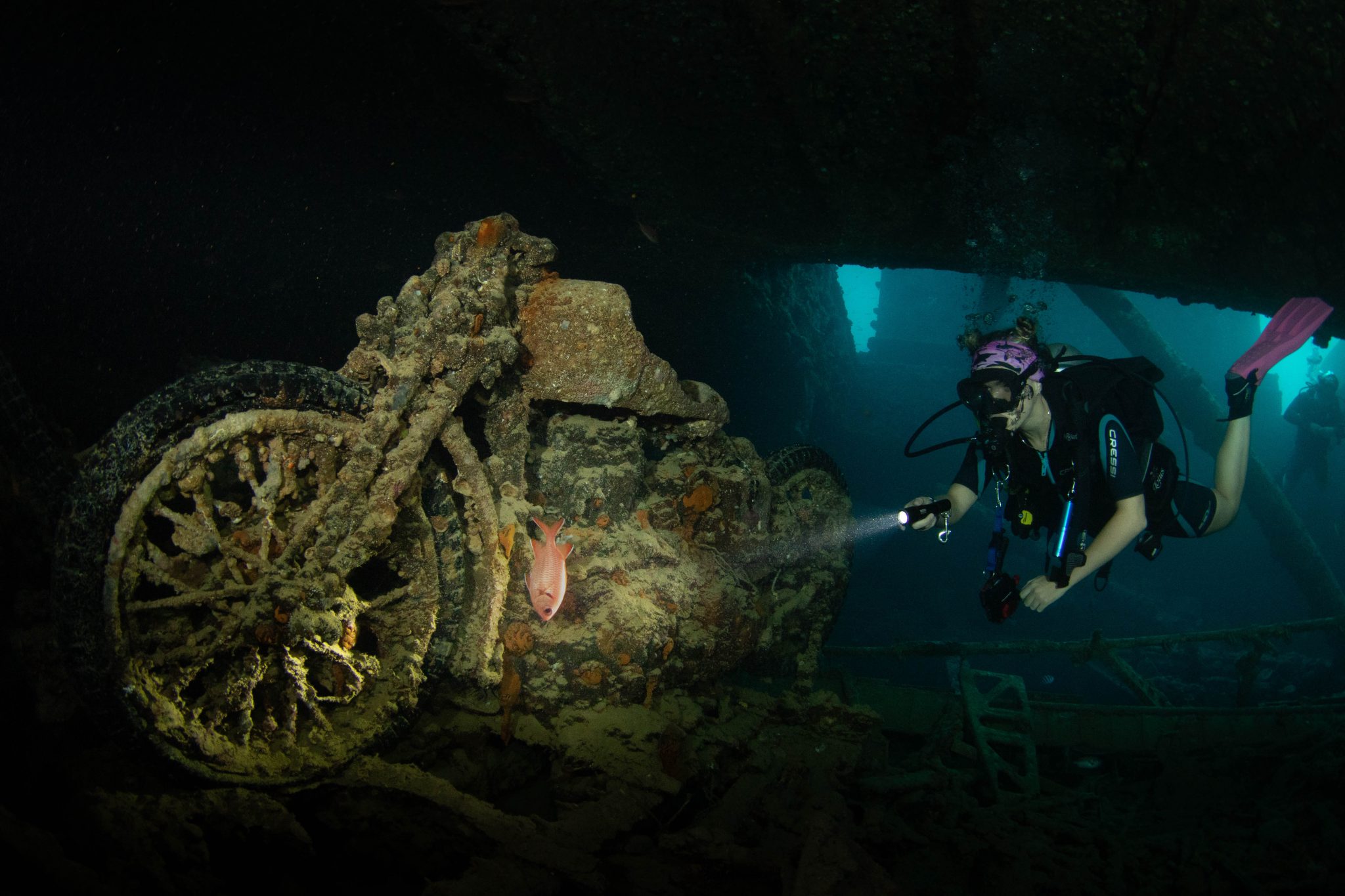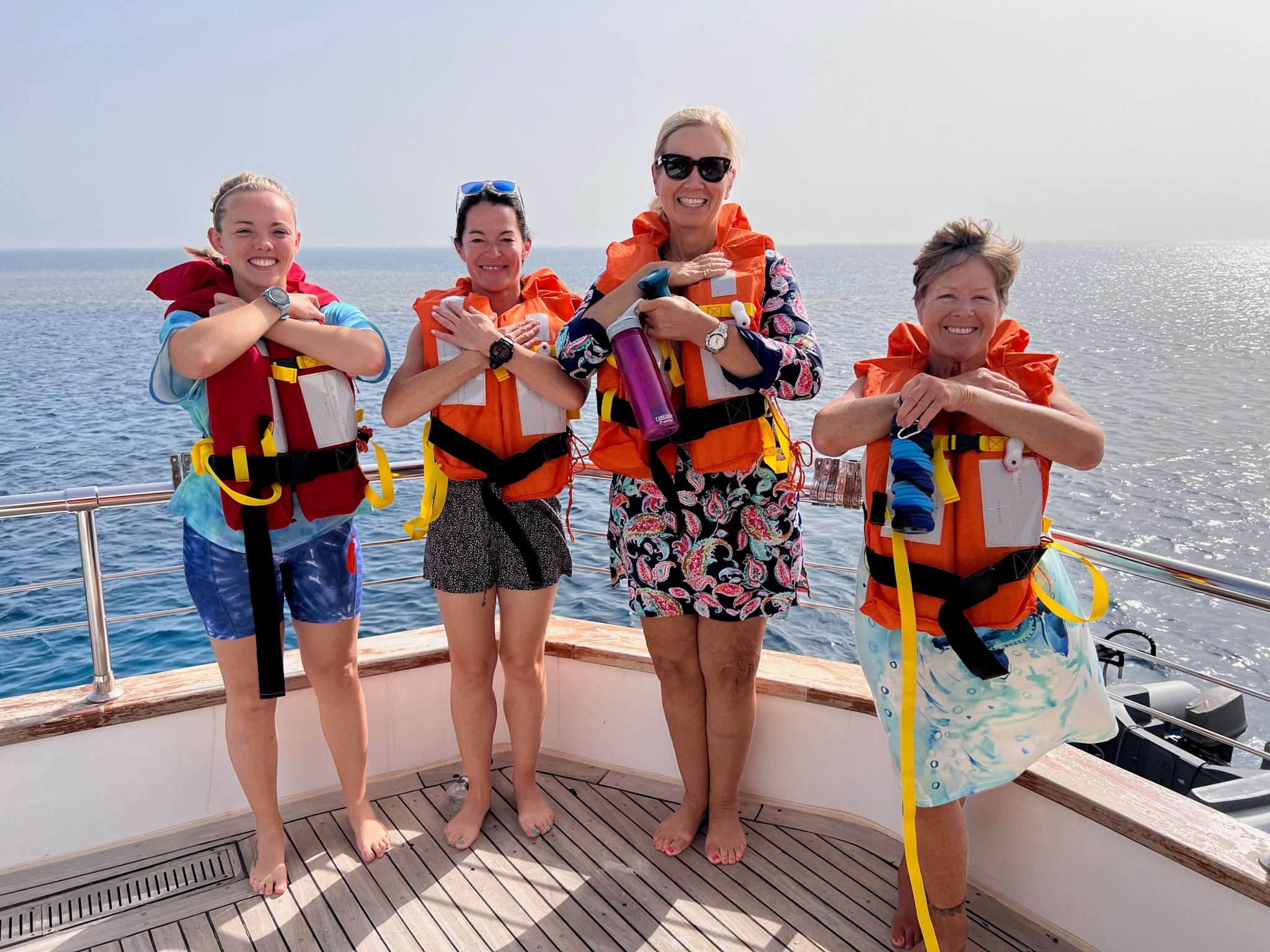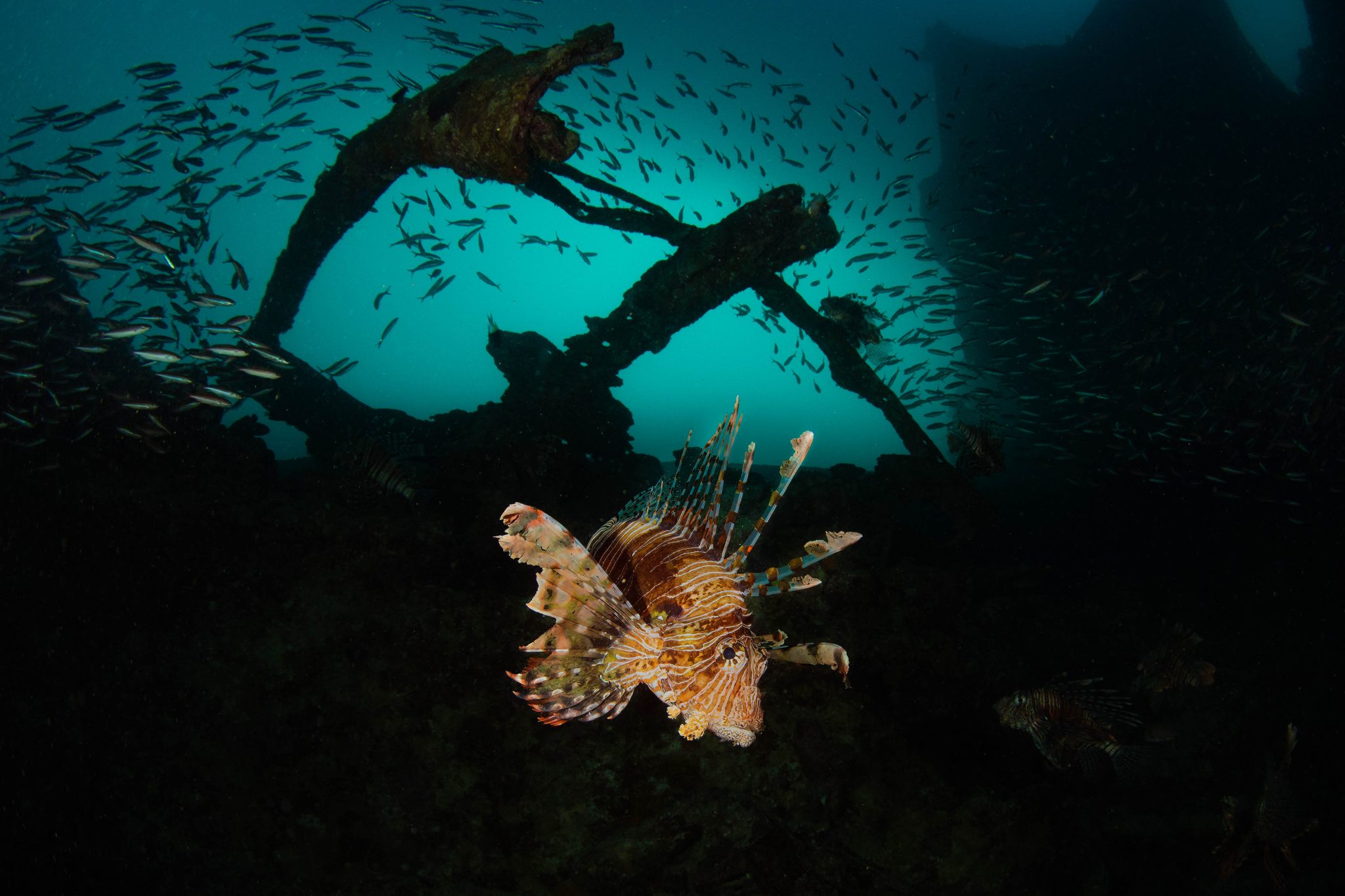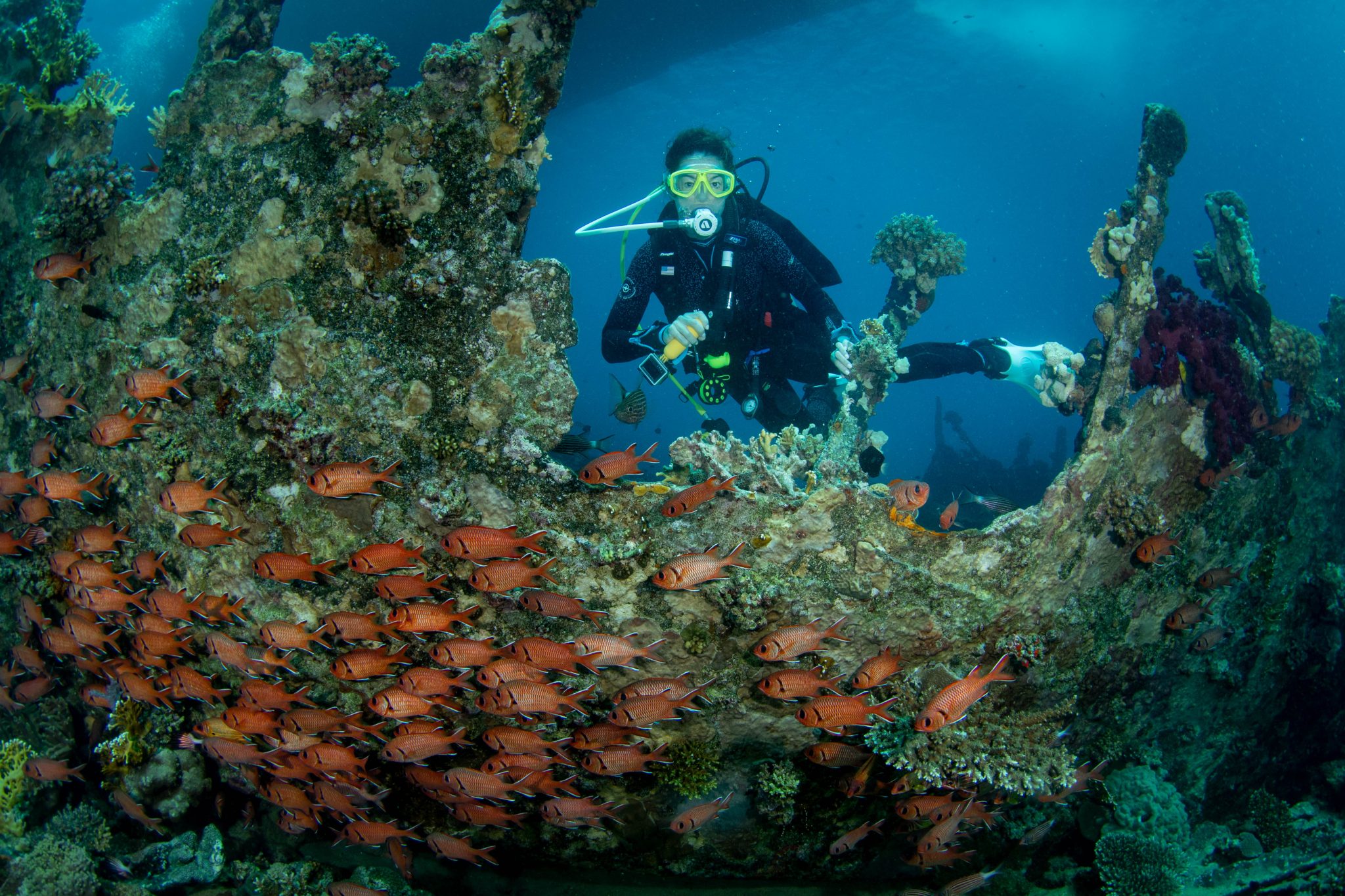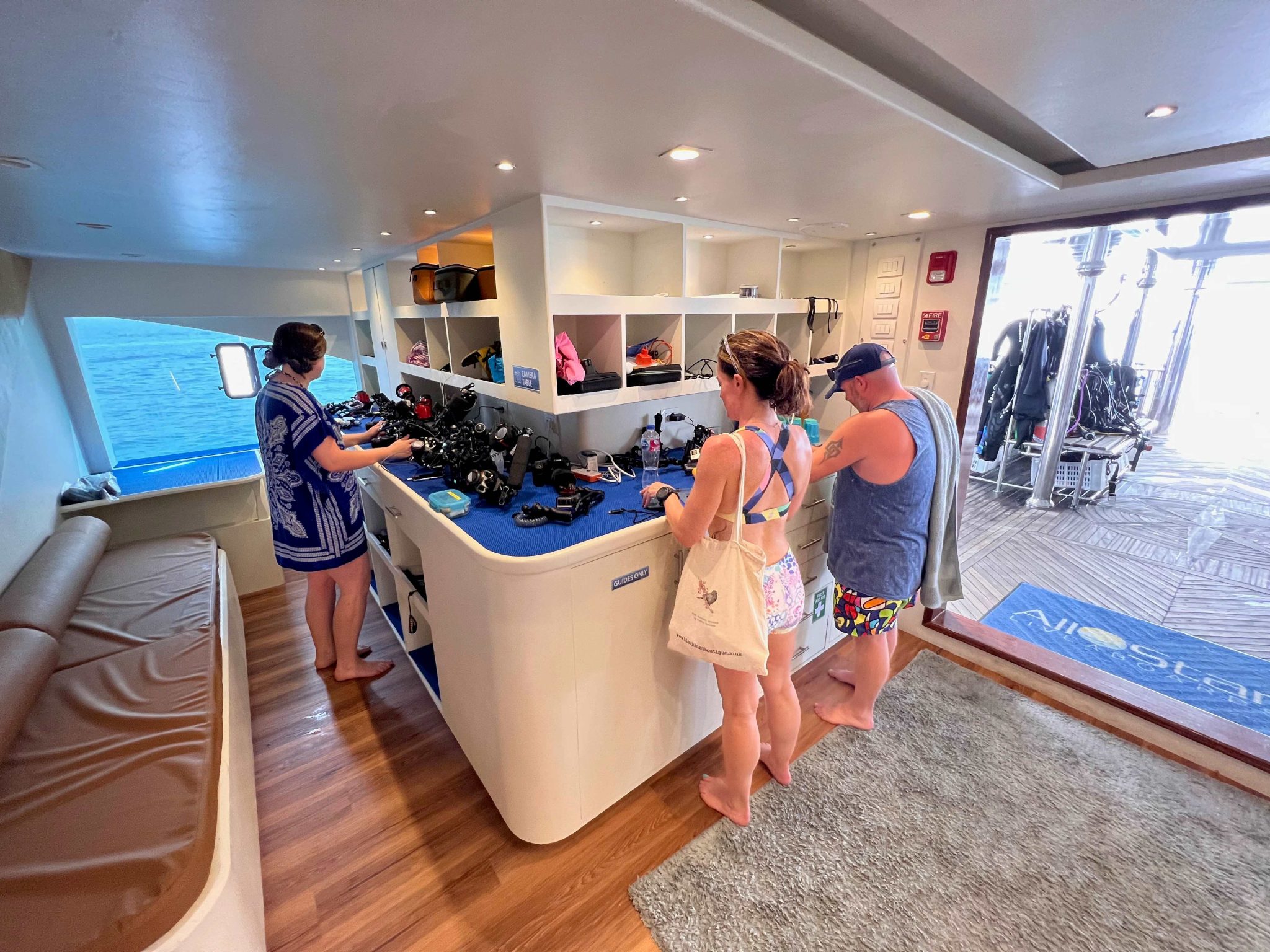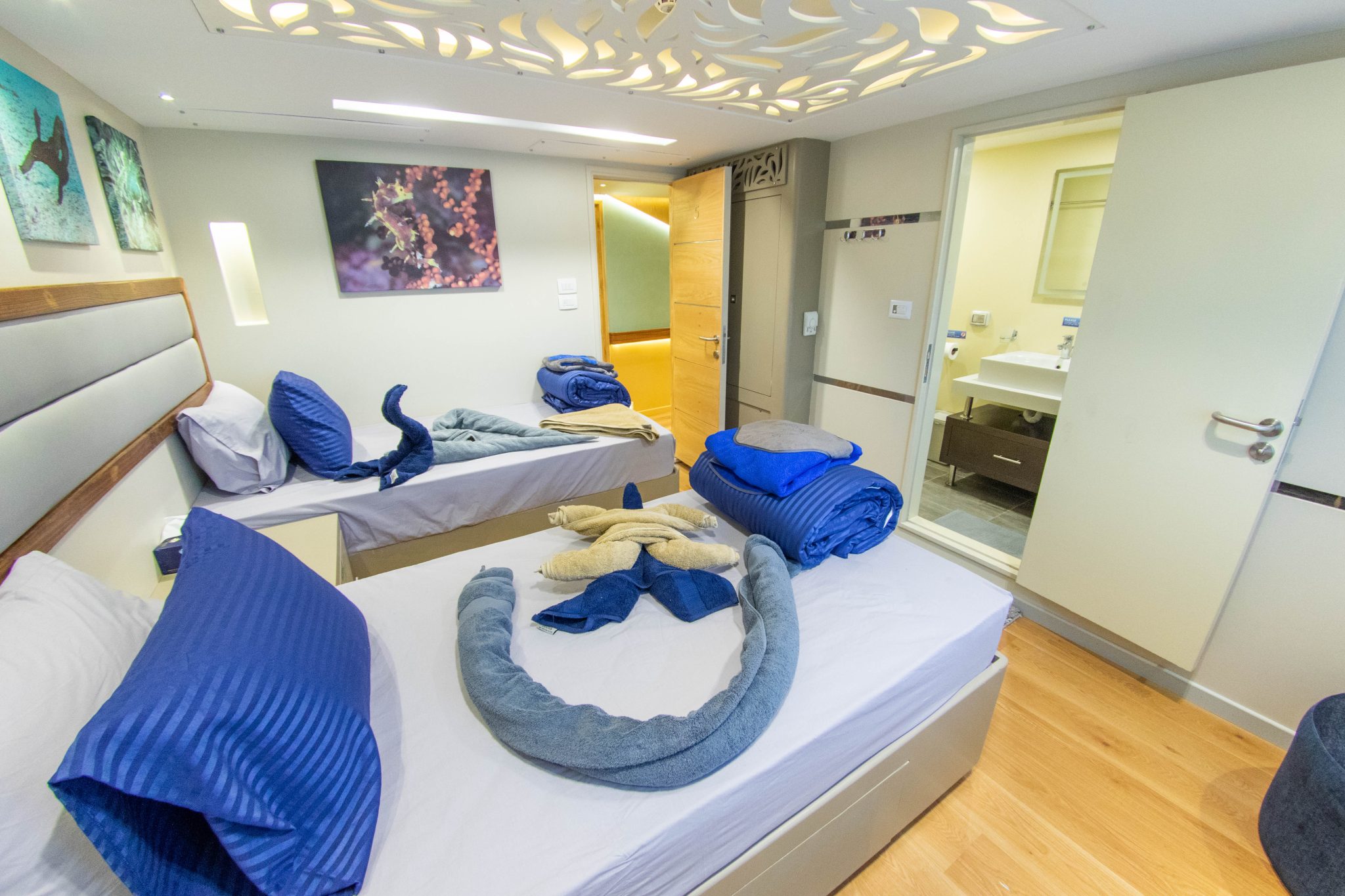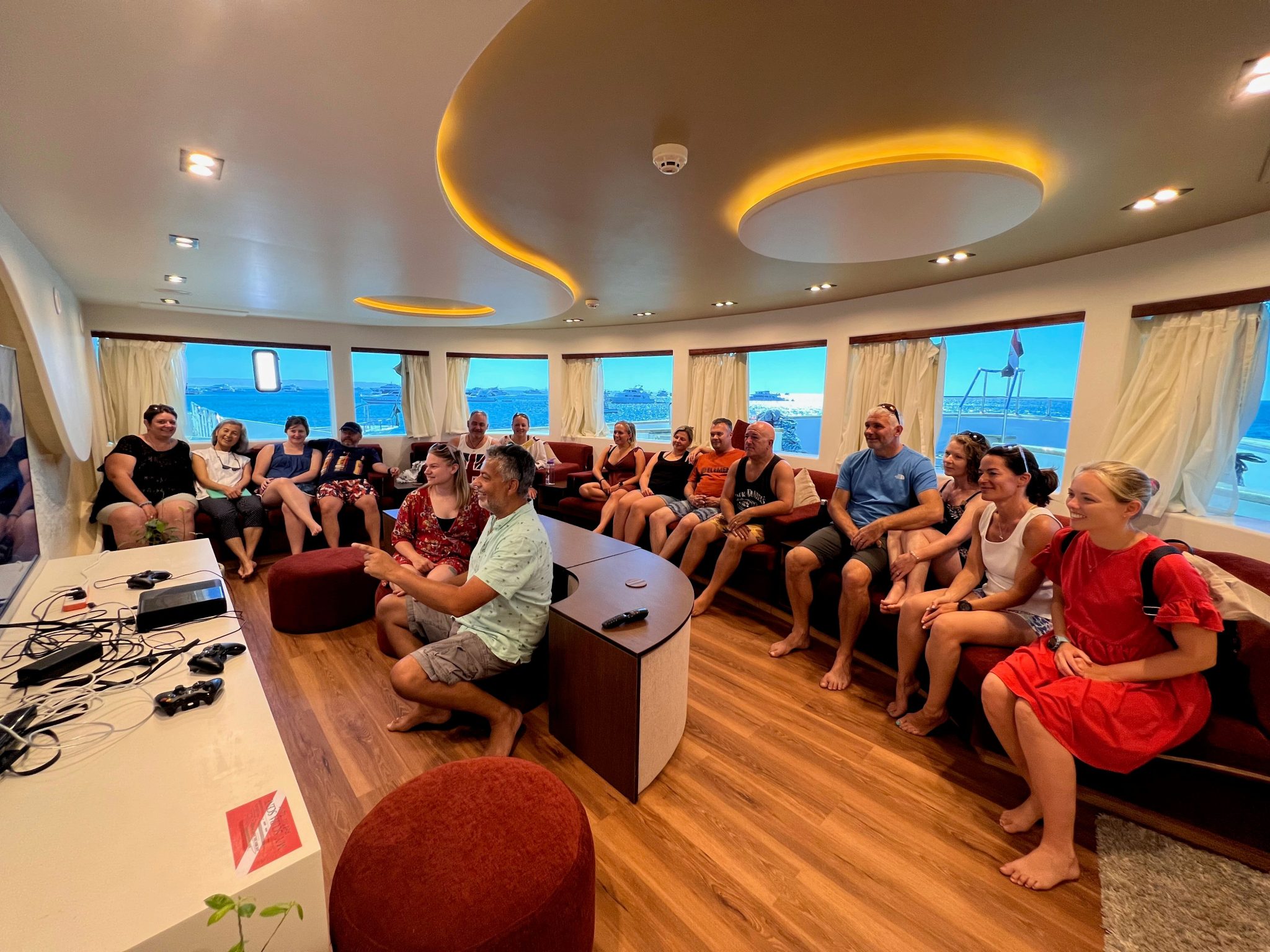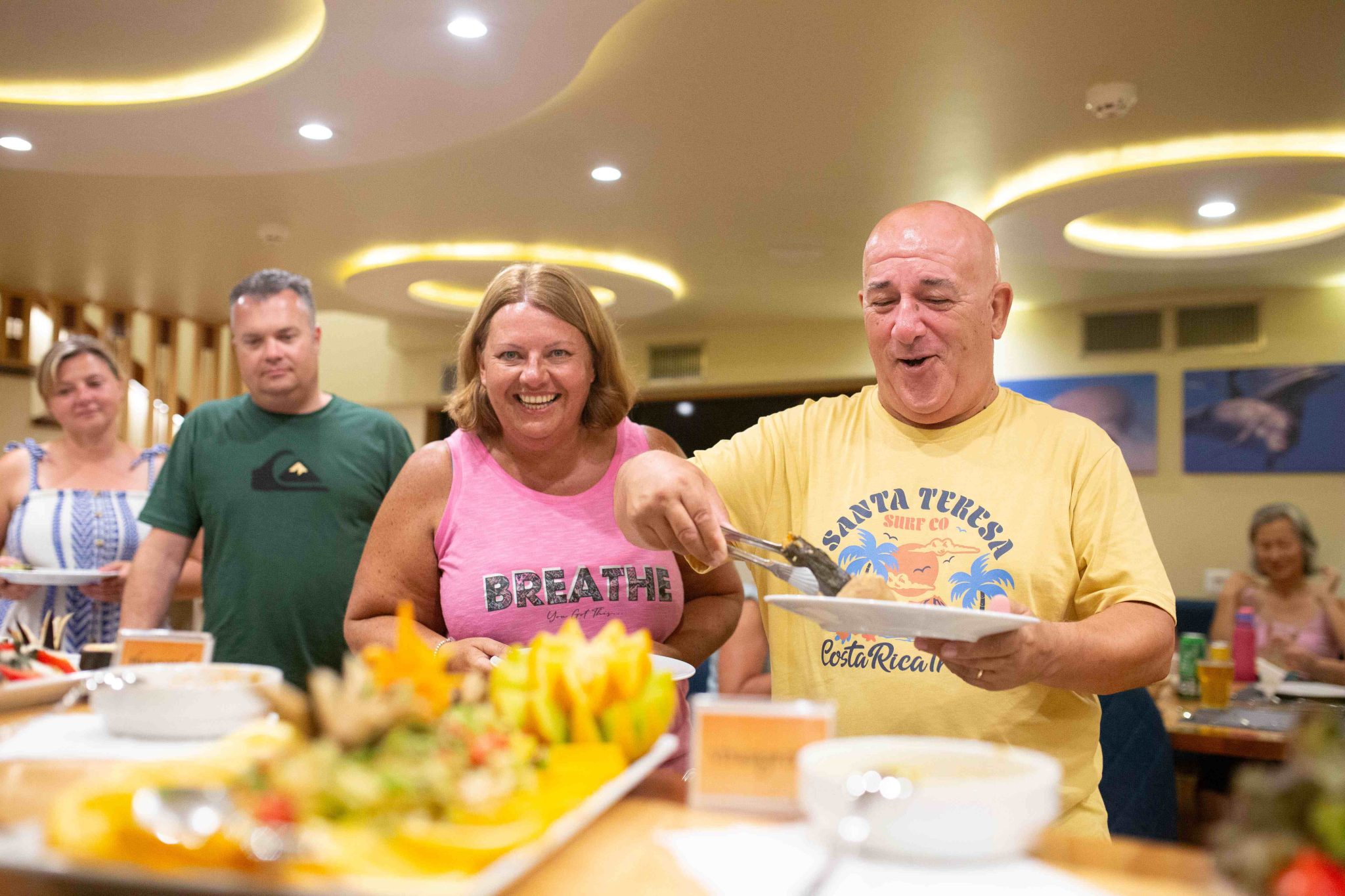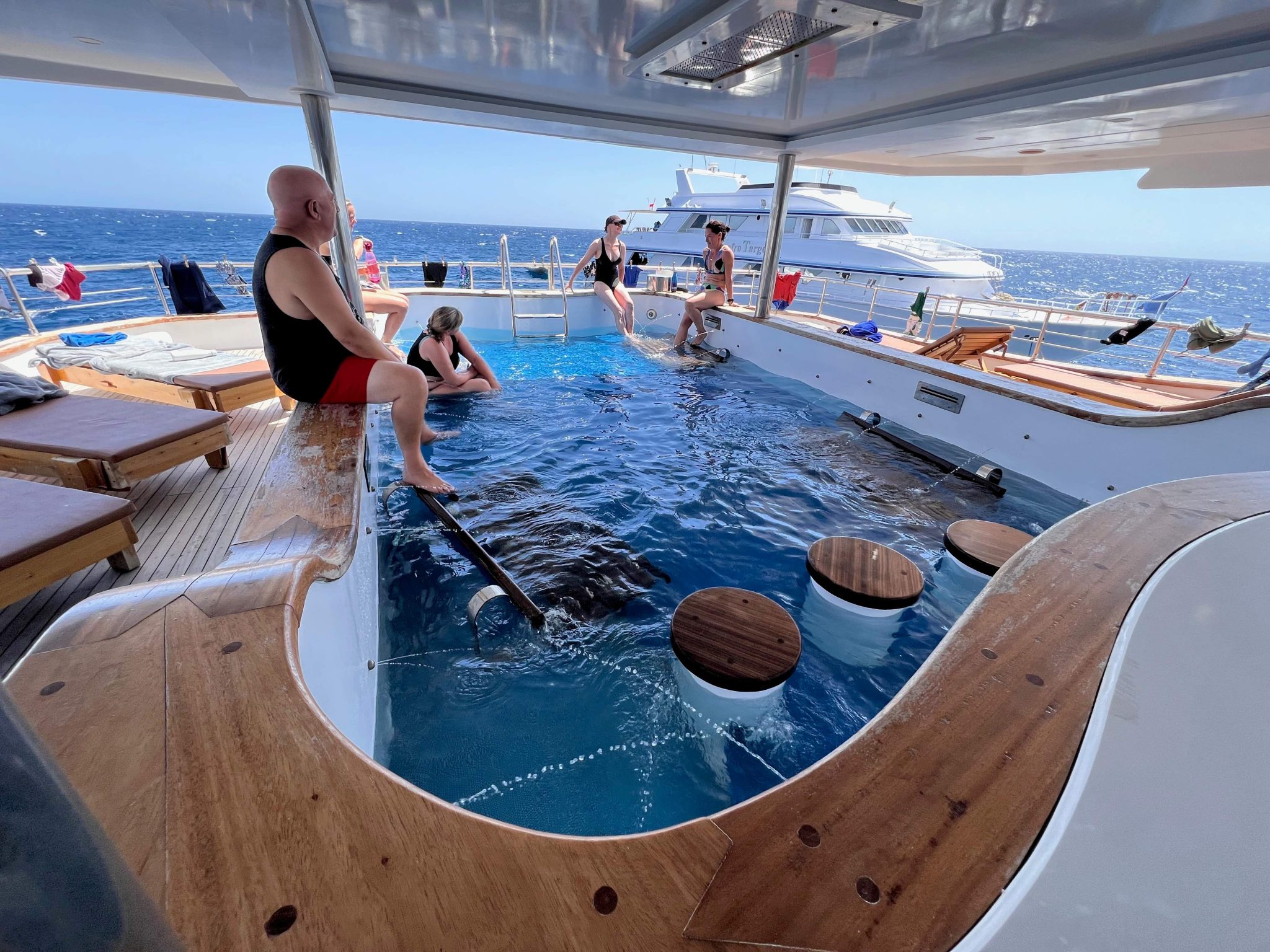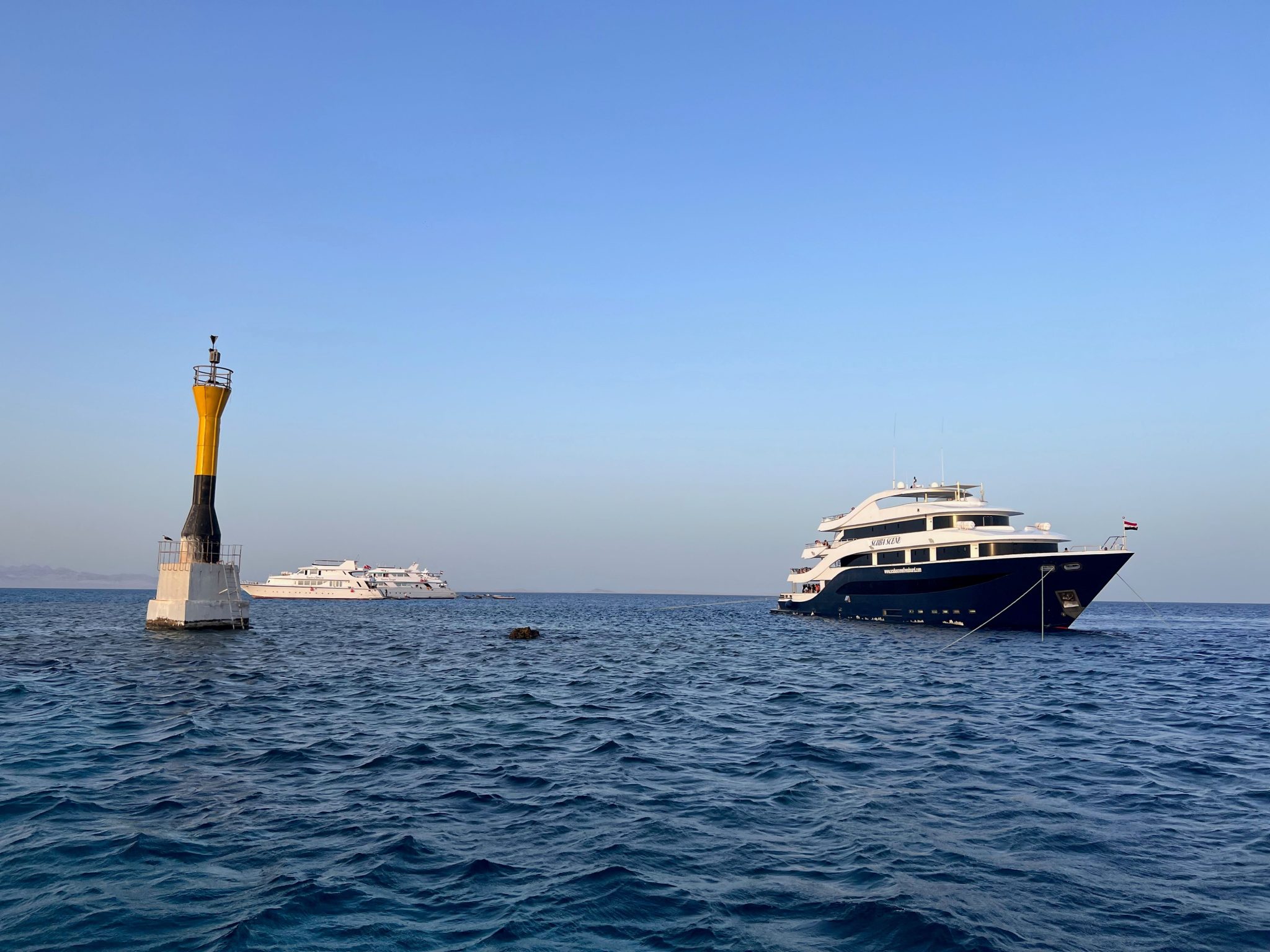Blogs
My week on Scuba Scene: simply the best Red Sea liveaboard experience

Saeed Rashid is blown away by the first-class luxury Red Sea liveaboard, Scuba Scene.
I first dived the Egyptian Red Sea in 1997 on a land-based holiday, diving with Divers Lodge out of the Intercontinental Hotel. Our accommodation wasn’t as fancy as the Intercontinental; it was just a small, cheap affair a few miles down the road, with very questionable food! Each morning we were picked up by a minibus and driven to the Intercontinental where we had to collect our dive gear from the small dive centre and carry it down the jetty to our day boat. We would then slowly steam out to our dive site where we would do a couple of dives before heading back and carrying, rinsing and returning all our gear to the dive centre ready to do it all again the next day. It was a right faff. I remember seeing larger boats and being told that they were floating hotels and dive centres rolled into one. People would board them, not get off for a week, and all you needed to do was step into your gear that was permanently set up and fall into the sea. As far as I was concerned, this sounded like pure luxury, and I told myself that this was the diving I wanted to do from then on. A couple of years later, after managing to save up the £500 it cost to stay on one of these amazing liveaboards, I made it – and have never looked back.
Since my first outing, I’ve been incredibly fortunate to have stayed on many liveaboards all over the world, but the Red Sea is still one of the most important destinations. With literally hundreds of liveaboards operating throughout its varied waters, most divers I talk to book onto them regularly. As you can imagine, competition between boats is strong, and I had believed that the pinnacle of luxury already existed in the liveaboard world. Every year the food would get better, with some boats even having a dedicated pastry chef to give you your daily sweet treats. The crew would always be amazing, on hand to help at every moment and larger and larger inside spaces and cabins became more and more comfortable. In recent years, some boats even boasted Jacuzzi hot tubs for you to relax in at the end of a hard day’s diving. But on a recent trip, all my expectations were blown out of the water – there is a new boss in town, and her name is Scuba Scene.
Scuba Scene is managed by the incredible duo, Ahmed Fadel and Elke Bojanowski, who many of you will know from their days working for Blue O Two. Ahmed is a tech diving guru and his boats have always played host to some of the most intrepid deep divers in the world. Elke is the founder of Red Sea Sharks and the only scientist operating in the Red Sea studying oceanic white tips. Her knowledge of these amazing creatures is surpassed by none and her world-famous shark diving trips are a must for any shark lover. So, with these two in charge, you know that the boat is going to be good but Scuba Scene is even better!
I was lucky enough to be on probably the best northern Red Sea itinerary. North wrecks and Tiran, which takes in all the must-see spots, such as the Ras Mohammed marine park, Abu Nuhas and of course the old lady herself, the world famous SS Thislegorm. But I was most looking forward to diving the reefs of Tiran Island as I haven’t been there for many years. Laying just to the east of Sharm El Sheik, Tiran Island sits at the gateway to the Gulf of Aqaba, a deep water sea 180km long and 20km wide that’s in fact the northern tip of the Great Rift Valley that stretches 7000km all the way down to Mozambique. Although this area is easily reached by dayboat from the mainland, this incredibly rich and diverse stretch of water really needs to be visited by a liveaboard that gives you time to explore the four main reefs, Jackson, Gordon, Thomas and Woodhouse.
But before we got on the way, there were the all-important safety briefings. It’s impossible to ignore the fact that in recent years, there have been several boat incidents, and where in the past, I would often not pay full attention to the briefings, they have now become forefront in my mind. You would never know that Elke gives this briefing every week; it was informative, insightful, and even fun when we all had to try on our life jackets. That really is the best way to get someone to remember very important information. I know this is becoming a lot more standard these days, but it’s nice to see people using equipment instead of just being told about it. It was also clear why these demonstrations were really important, as several people had never put on a life jacket before.
A couple of guests requested a walk around to see some of the other safety equipment, and I tagged along. As well as the lifejackets, there are three 25-person lifeboats, and of course the two large speedboats we would be using for diving in the week, and with numerous flotation rings all over the boat, we were definitely covered in the unlikely case of an evacuation. Scuba Scene also has one of the most comprehensive firefighting systems I’ve ever seen. Smoke and heat alarms all over the boat feedback to a panel on the bridge, so if one is triggered, the captain can quickly see its location and inform the crew, who if needed can man one of the six fire hoses that cover every part of the vessel. It’s clear to see that a lot of thought has gone into the safety features onboard Scuba Scene, and I felt my trip’s safety was in great hands.
Our first days diving was, of course, a check dive to make sure we could all still go underwater safely. Often people dismiss these as uninteresting sites, but in my experience, these areas are dived much more often than other reefs and the marine life has gotten very used to us alien divers, meaning it’s possible to get much closer to the reef inhabitants than you would be able to at other locations. So next time don’t turn your nose up to the check dive – think of it as a great opportunity to meet your new fishy pals.
We were soon off to Tiran and the incredible diving there. As soon as I dropped in, I was reminded why I have always loved diving here. As I mentioned previously, the coral reefs of Tiran sit on the southern edge of the Gulf of Aqaba and are fed by the rich deep waters that surround it, meaning they always have abundant fish life and beautiful corals. Thick clouds of Anthias sweep back and forth over the reefs trying to hypnotise unsuspecting divers with their rhythmic movements. This beautiful and often overlooked orange fish is sometimes referred to as the Queen of the Red Sea and is one of my favourites; some say it used to be present in such large numbers the water would look red, hence the name, Red Sea.
While exploring the shallows with my buddy Elke, we came across one of the largest schools of masked butterfly fish we have ever seen. Often, these fish swim in pairs or sometimes in small groups, but this school of several hundred was a rare and beautiful sight that we enjoyed spending much of our dive with. Turning around and heading back towards the boat, it was lovely to see the large bright green lettuce corals which are abundant in the shallows, with gorgonian sea fans and soft corals liking the deeper walls and drop-offs. It’s always worth keeping an eye out in the blue here, as large pelagic fish will often be swimming by. I remember spotting a large school of massive yellowfin tuna here. Each fish must have been two and a half meters long; I have never seen tuna so big since. If you are lucky, hammerhead sharks can also be spotted in the area, especially around Jackson Reef. But as always, time underwater is never long enough and it’s time to surface. We are the only boat here, but even if we weren’t, it would be easy to spot our boat – underwater, her huge size makes her very recognisable.
Scuba Scene is no normal boat. We divers have some very specialised requirements and as you would expect, every part of this vessel has been designed with us in mind. When you step on board, you are presented with a vast teak dive platform with two full-size showers on either side, and not just shower hoses that drip water like you see on many other boats. Two rinse tanks right next to them allowing you to fully rinse your gear after each dive. . The kitting-up area is just above this, easily big enough to fit a maximum of 28 guests. Not that you would ever need to, as dives are always split into two groups, meaning there are never more than 14 guests getting ready at any one time, making this area feel absolutely vast. Just behind the dive deck is a camera room – yep, an actual camera room – with sloped cubbyholes so your gadgets don’t fall out if the boat rocks and charging points so everything is all in one place. As a photographer, this one feature on its own would guarantee my booking on this boat. For years I’ve had to take up valuable space in the saloon, getting funny looks from other guests for spreading all my camera gear around the seats and tables, but no longer; I now have my own space, and I am so happy.
Very often, sleeping accommodation on a liveaboard is below decks with the saloon above, but Scuba Scene has flipped the deck plan. This means there are no cabins below the waterline. Talking to some of the guests on the trip, this was one of the reasons they had booked, and had enabled some to experience the joy of a liveaboard for the first time because they never liked the idea of being ‘stuck down below’. This also means everyone is well away from the engine room and any noise, giving you a nice, peaceful sleep even when the boat is moving. Another unusual feature is that virtually all the cabins are the same, with twin beds that can easily be moved together to give a king-size double. A double bed, if available, was often something you had to pay a premium for, but not here. There are two cabins in the bow which have been designed as singles and where I stayed. Even as a single cabin it was still bigger than most other boats I have ever stayed on, with the same large ensuite bathroom with a lovely rainfall shower just as the rest of the rooms have. Gone are the small portholes, replaced with full-length panoramic tinted windows which are also used in the shower rooms, and it’s quite an experience showering while looking out at the fish on the coral reef you just dived. Don’t worry, there is a curtain for you to draw if there’s another boat alongside!
I know what you’re thinking – what if you wanted to get away from all the talk of diving (madness, I know)? Maybe watch a movie, or even have a quick game of Call of Duty? I’m pleased to say that Scuba Scene has you covered here as well. Tucked up at the bow is the boat’s very own cinema/games room, and not a pokey little cupboard either, but big enough to get everybody in. Although an amazing asset, this room was the one that was the least used on my trip and I had forgotten it even existed until the last night when I was challenged to a game of Mario Kart. Where this room could be very useful is if you had younger guests or a smaller group who wanted to do some bespoke training away from the main saloon so as not to disturb others.
What about the food you ask? I’m not sure I’ve ever been on a diving holiday and gone hungry. In fact, there is often so much food that I go home several kilos heavier than when I arrived, and nothing changes here. You literally want for nothing. Catering for a range of diets, steaks are cooked to your liking (and it really is some of the best steak I’ve eaten), but if you prefer a plant-based diet then you are absolutely taken care of just as well.
But I’ve left the icing on the cake until last. Scuba Scene has a swimming pool! Yeah, that’s right, it has an actual, real swimming pool. Okay, if I’m being honest, it’s a bit more of a splash pool, but it’s big enough to get a dozen of you in at the end of a hot day to cool off with an ice-cold Sakara Gold. This was a first for me, having been on dozens of boats with Jacuzzis which are great, but are not used as often as you would think, taking a long time to fill and only a few of you can fit in at a time (oh btw, Scuba Scene has one of these as well). This pool is filled with filtered seawater in a matter of minutes, meaning that whenever the boat is moored for a while the pool can be filled. Because of the nature of liveaboards, you don’t often get non-divers or divers who want a more relaxed holiday where they would maybe dive once and then sit around the pool. Well, we had exactly that on this trip, a non-diving partner who took the opportunity to occasionally snorkel and then indulge in the swimming pool. Talking to her at the end of the week, she said that the swimming pool made the trip very special and she didn’t feel left out from all the diving going on around her.
At 48.5m in length, Scuba Scene is one and a half metres under the legal length of a cruise ship, meaning she is probably the biggest liveaboard that anyone will ever build. As a cruise ship, vessels must conform to even stronger regulations, from permanent lifeboats hanging from davits to a much higher crew-to-guest ratio. All of these things would increase overheads and make the operation of these boats much less viable meaning we will probably never see super liveaboards cruising up and down the Red Sea.
The Scuba Scene website says, “M/Y Scuba Scene is spacious, functional and comfortable, with regards to the cabins as well as the public areas and the dive deck.” In my opinion, this is the most understated quote I have ever read. Scuba Scene is by far the most luxurious and well-equipped liveaboard I’ve ever been on. I love the boat so much I’m heading back next summer to run an underwater photography workshop on her – who’s with me?!?
To book a trip on Scuba Scene or a place on Saeed’s 2024 underwater photography workshop, visit https://oysterdiving.com/trip/scuba-scene-red-sea-egypt/.
Blogs
Alonissos: The complete diving destination (Part 1)

In June we were incredibly fortunate to be invited to dive in Alonissos, a small Greek Island in the Sporades island chain located in the North Aegean Sea. While I have long been a big fan of the Greek Islands as a great holiday destination, I had not had the opportunity to do any diving on previous visits and Mike and I were extremely excited to see what Alonissos had to offer both above and below the surface!

The Sporades are easily accessible via the airport in Skiathos (the first island in the chain), which is served by Jet2 flights from all major UK airports from May through October. Numerous ferries and charter boats make island hopping from Skiathos Town a breeze. After an hour boat ride, the picturesque port of Patitiri was a wonderful introduction to Alonissos, where we were met by our gracious hosts Kostas of Albedo Travel and Dias of Alonissos Triton Dive Center. Mike and I were delighted to be staying at the Paradise Hotel, aptly named for its stunning views over the sea and great location for walking to the waterfront.

Alonissos is beautifully situated in the National Marine Park of Alonissos and the Northern Sporades, the largest marine protected area in Europe. The surrounding seas offer fabulous marine life, including incredibly rare species such as the Mediterranean monk seal. They boast deep walls covered in gorgonians and sponges, stunning topography with caverns, swimthroughs and pinnacles, and the first accessible ancient shipwreck from 500BC!

In locations where historical sites have been reported, the waters are largely restricted, but with collaboration between government, underwater archeologists and dive centres, incredible underwater museums are being created for a truly unique diving experience. Alonissos is home to the first of these, the Ancient Shipwreck of Peristera Accessible Underwater Archeological Site. The chance to dive into history (along with reports of healthy reef life and amazing underwater topography) meant Mike and I were keen to get in the water.

Our introduction to the diving around Alonissos was at the Agios Georgios Pinnacles, in the channel between Alonissos and Skopelos. This fantastic site was named “The Chimney,’ and proved to have a huge amount to see. We got to a decent depth here (over 25m), and marvelled at a colourful reef wall with a wonderful swim through whose rocky walls were absolutely covered with life. As well as brilliant topography there was no shortage of macro life here. We saw numerous nudibranchs, five different species in total. The second dive at Mourtias reef nearby was a shallower dive along a nice wall with lots of crevices. Several moray eels and grouper called this site home. We enjoyed looking in the crevices for lobster and smaller benthic life, such as cup corals and tunicates.

Our itinerary allowed us two dives a day with afternoons left to explore the island with our hire car and evenings to enjoy the famous Greek hospitality. This proved to be a lovely mix of in-water and land based diversions.

The next days diving to the Gorgonian Gardens and Triton’s Cave was to be even better! These two stunning sites are nothing short of fabulous. The Gorgonian Gardens was a deep wall near to the Agios Georgios islands. The ever-present currents in this deep channel meant that the sea life was amazing … the namesake Gorgonian sea fans dotted the wall at a depth of 30 to 50 meters, getting ever larger the deeper we went. Above 30m was by no means less beautiful, with sponges, corals, scorpionfish, moray eels and some rare and colourful nudibranchs.

The second shallower dive of the day was to Triton’s Cave or the Cavern of Skopelos, on the east side of that island. The spectacular rock formations had wild striations both above and below the water making a truly epic topography. The cavern entrance was at 14m, and big enough for a buddy pair, winding up to 6m and passing two beautiful windows out into the blue. Emerging from the cavern, the light at the shallower depths and the incredible rock formations made for a fantastic gentle swimming safety stop and we all surfaced by the boat with massive grins.

Check out our next blog :Alonissos: The complete diving destination (Part 2)” to hear about our amazing dive on the 2500 year old Peristera Wreck!
Thanks to:
Alonissos Triton Dive Center https://bestdivingingreece.com/
Albedo Travel https://alonissosholidays.com/activities/
Paradise Hotel https://paradise-hotel.gr/
Alonissos Municipality https://alonissos.gr/en/
Blogs
Mamma Mia! Diving Skopelos (Part 2)

Our second days dive itinerary was to the famous Christoforos wreck! This is arguably the best dive in Skopelos and though only open to divers with deep diving experience, this 83m long wreck is well worth the visit.
The Christoforos sits in 43 meters of water with the deck at 32 to 35 meters. A 30m dive can give an impressive view of the wreck, though such a large wreck needs a few dives to truly do it justice. Given its ideal location just a 2 minute boat ride from the dive centre dock it is an excellent first dive of the day. The sheltered site is also diveable in all but the absolute worst weather so although deep, the water is usually clear with little to no current making it a very pleasant dive. The site is superb for technical diving and a great training site for the Tec 40 and 45 programs, offered by Skopelos Dive Center.

The Christoforos wreck was originally a collier ship built in 1950 at Grangemouth shipyard under the name “Thomas Hardie”. In 1976 she joined the Greek merchant fleet as “Christoforos”. On the 2nd of October 1983 the Christoforos was carrying 2600 tonnes of cement from Volos to Piraeus Port. During the voyage the weather turned, resulting in the ship developing a 7 degree list, whereby she changed course for safe anchorage at Panormos, Skopelos. The ship reached Panormos at 16:00 with a list of 17 degrees and water ingress to No. 1 hull. Though attempts were made to right the vessel, the crew were ordered to abandon ship at 22:00. The captain, lieutenant and the quartermaster remained to try and save the ship, but had to abandon the attempt themselves and the Christoforos finally sank at 05:30 on 3rd October 1983. She now sits upright in 43 meters of water less than 200m from shore in Panormos.

Diving has only been allowed here since 2018, so the wreck is very well preserved and a real treat to dive. Permission to dive here was granted by the authorities after lots of incredibly hard work by the Skopelos Dive Center staff. Having a fantastic wreck in such an amazing location and in excellent condition is a real privilege.

Of all the sites in Skopelos this was the site Mike and I were most keen to experience. Having kitted up and zipped across the bay to the mooring, we left the surface and followed the descent line until the wreck emerged spectacularly from the blue at 15m. She is a big and beautiful wreck, sitting as though calmly continuing her journey along the seabed. With most of her original features still intact there were points of interest everywhere, including the anchors, winches, ships telegraphs, the wheel and RDF antenna.

We found that aquatic life had colonised the ship, with schools of fish, electric blue nudibranchs, a large moray eel and the resident scorpionfish lurking inside the bridge. The Christoforos was truly a stunning wreck and despite maximising our time at depth we eventually had to say our goodbyes and begin the slow and steady return to the surface.

After a superb morning dive we had the afternoon to do a little sightseeing of the island, with a trip to the church of Agios Ioannis Kastri made famous by the blockbuster movie “Mamma Mia!”. Mike and I spent a happy afternoon pootling around in our little hire car before meeting up with Lina from Skopelos Dive Center. An underwater archeologist as well as a dive professional, Lina had offered to show us a rather special attraction, the Christoforos shipwreck Digital Spot public information and awareness centre.

A fantastic initiative made possible from the collaboration of the government and hard work of the staff at Skopelos Dive Center is the “Digital Spot” in Agnontas port. This information center has a number of displays on the history of the Christoforos wreck, the process by which the wreck was allowed to be opened to the public for diving tourism, other sites of historical interest in the area, a video of the wreck and the best bit, a virtual reality dry dive experience! The beauty of the VR system is that non diving members of the family can see what you have seen on the wreck, or you can see areas that you may not have explored during the dive due to time or depth limitations. It was a truly immersive experience and a great addition to the dive itself.

After a wonderful day we celebrated our last evening on the island with an exquisite meal in Skopelos Town with fabulous views over the town and bay, washed down with the excellent local wine. The lamb with lemon and potatoes was a meal which I could happily eat every day for the rest of my life!

Skopelos is an island that truly has it all. The diving is excellent, the landscape is beautiful with plenty of non diving activities, the locals friendly and the food and drink superb. Given how accessible it is as a holiday destination it has avoided becoming overcrowded and even in peak season offers a fun yet relaxing atmosphere. We highly recommend giving Skopelos a visit. We will certainly be back again!
Thanks to:
Municipality of Skopelos (https://skopelos.com/)
Skopelos Dive Center (https://sporadesdiving.gr/)
Ionia Hotel (https://www.ioniahotel.gr/en)
Dolphin of Skopelos (https://dolphinofskopelos.com/)
Ta Kymata restaurant (@takymata)
The Muses restaurant (https://www.facebook.com/TheMussesMousses/)
Aktaiov resturant (https://skopelos.com/listings/aktaion-taverna/)
-

 Blogs2 months ago
Blogs2 months agoDiving With… Nico, Ocean Earth Travels, Indonesia
-

 News1 month ago
News1 month agoMurex Bangka Announce New Oceanfront Cottages & Beachfront Dining
-

 Blogs2 months ago
Blogs2 months agoA new idea in freediving from RAID
-

 Marine Life & Conservation1 month ago
Marine Life & Conservation1 month agoIceland issue millionaire whale hunter a licence to murder 128 vulnerable fin whales
-

 Marine Life & Conservation2 months ago
Marine Life & Conservation2 months agoThe Shark Trust Great Shark Snapshot is back
-

 News3 months ago
News3 months agoCharting New Waters; NovoScuba Goes Global with the Launch of their Revolutionary Dive Training Agency!
-

 Gear News1 month ago
Gear News1 month agoNew Suunto Ocean – a dive computer and GPS sports watch in one for adventures below and above the surface
-

 Marine Life & Conservation Blogs2 months ago
Marine Life & Conservation Blogs2 months agoBook Review: Plankton


